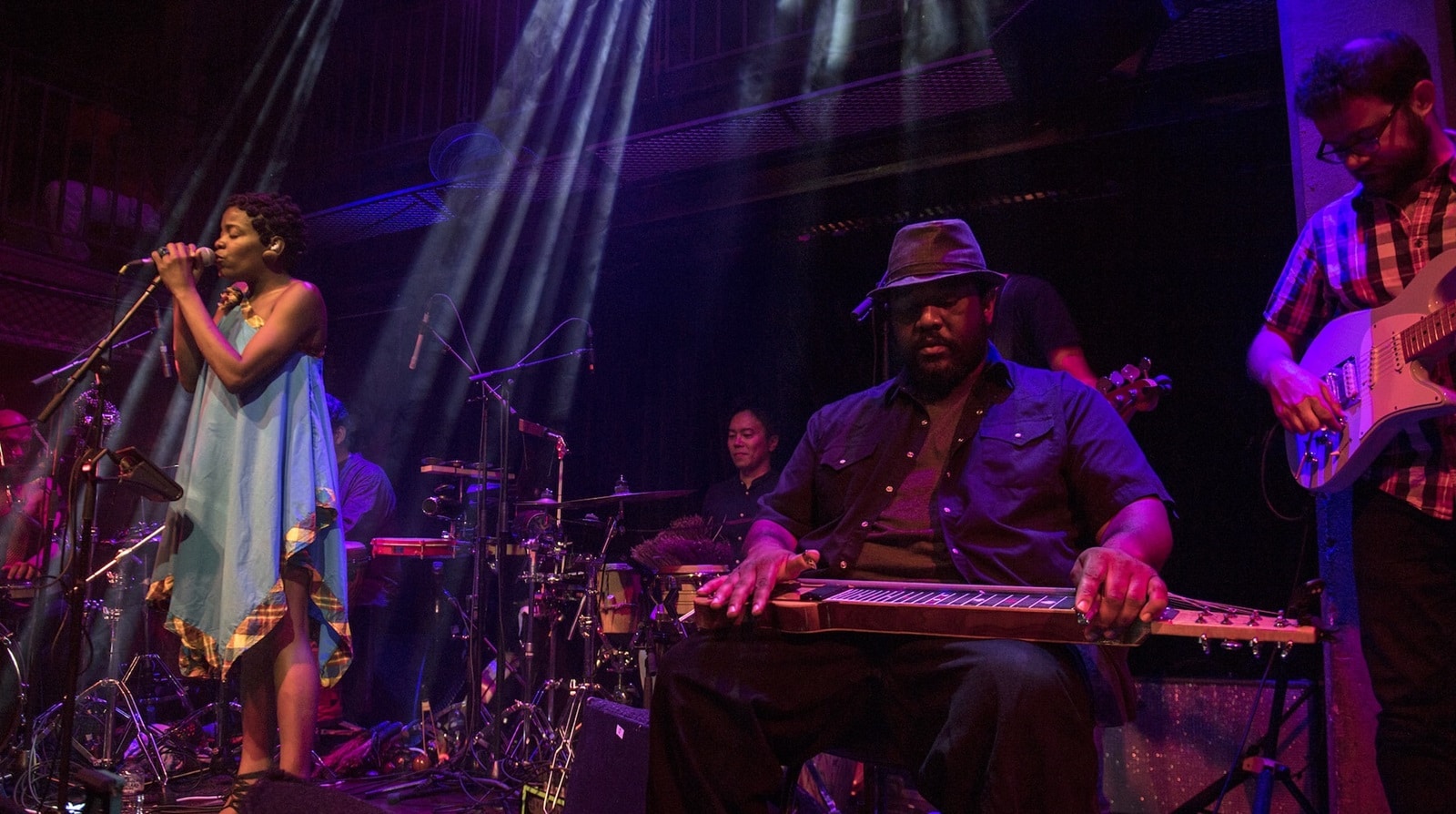

Bokanté—which means "exchange" in Guadeloupean Creole (the language of vocalist Malika Tirolien’s childhood island)—is an eclectic group founded by composer/producer/musician Michael League who is also the leader of the Grammy-winning jazz ensemble, Snarky Puppy. Released on Peter Gabriel’s Real World label, What Heat is Bokanté’s second album and was created in collaboration with The Metropole Orkest in the Netherlands led by its chief conductor Jules Buckley. Avid caught up with Michael League and veteran producer/engineer/mixer Nic Hard (Snarky Puppy, The Bravery, The Church) shortly before the release of What Heat to learn more about the creative process and the challenges they faced in recording and mixing this ambitious project.
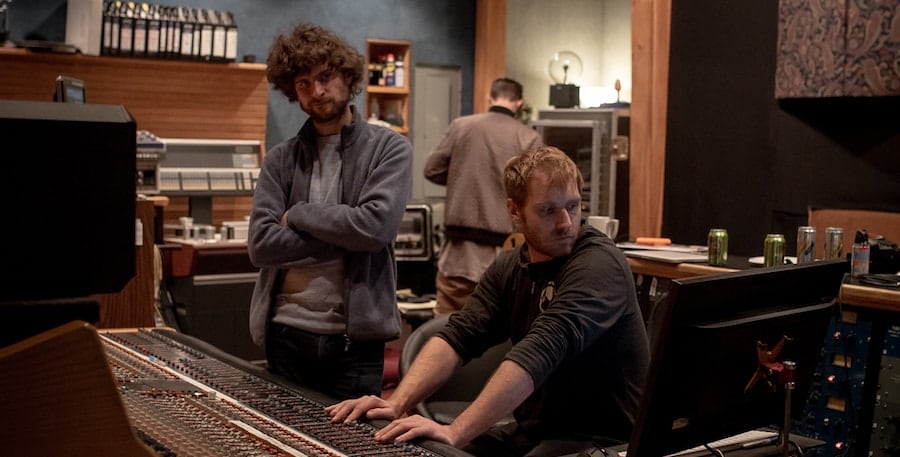
Michael League and Nic Hard at Dreamland Studios
How does the new album differ from the first Bokanté album, Strange Circles—how was your approach different on this one?
Michael: The most obvious difference is that it's a fully acoustic record versus Strange Circles, which is largely electric. So the guys who were normally playing electric guitar on the first record are playing baritone acoustic guitar, six-string acoustic guitar, or 12-string acoustic guitar. I was playing oud and an acoustic fretless bass guitar. This record is a collaborative effort with a symphony orchestra from the Netherlands called the Metropole Orkest, which is conducted by my good friend, Jules Buckley. So the size of the band went from nine people to sixty-one people, which makes life a little more interesting. In terms of songwriting, I think these tunes are a little more structured. Strange Circles is pretty open, and this one feels a bit more organized in a way. From the beginning it was decided that it would be a collaborative effort and we were writing the music with the orchestra in mind.
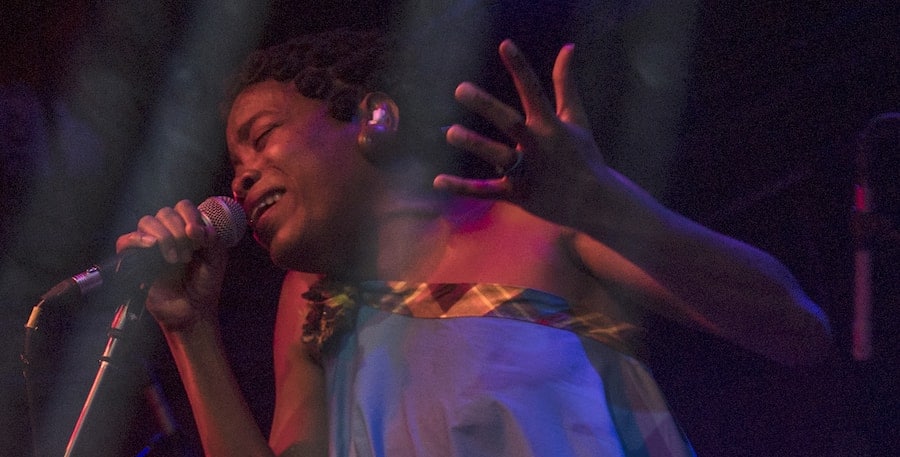
Vocalist Malika Tirolien
What was the overall arc as far as how this project got put together between writing, recording, and mixing—the different stages?
Michael: Normally the way the tunes start is that I'll write the music and I'll send it to Malika. She'll write most of the melodies and all the lyrics, and then we'll kind of compare and share our opinions about it and make little edits. We did the first record all over e-mail, actually. I would send her music, she'd send it back with vocals. For this record, some of it was done like that, but most of it was with her and I in the same room writing together, which speeds up the process and makes it a lot more efficient. When all that was done being written, we then recorded everything at Dreamland in Woodstock, except for the vocals, dobro, and orchestra. We came to my studio in Brooklyn, Atlantic Sound Studios, and we recorded the dobro. I wrote the parts for the orchestra in between the dobro session and the orchestral session. I don't really like writing string arrangements or orchestral arrangements without the music having been recorded first, because a lot changes during the rhythm section tracking.
So I wrote the music and then went to Berlin to meet with Jules Buckley. We spent a few days going through my arrangements, changing them, adding things—that's where Jules really puts his stamp on it. He wrote some new sections as well as making changes to the arrangements that I had done. We add the help of Stefan Behrish as well, who helped arrange and orchestrate three of the songs on the album. We then went to the Netherlands and recorded the orchestra, and then immediately after we recorded the vocals, which I think we did in two days, with Malika. She and her daughter came over to Holland with us. So that was the process in a nutshell.
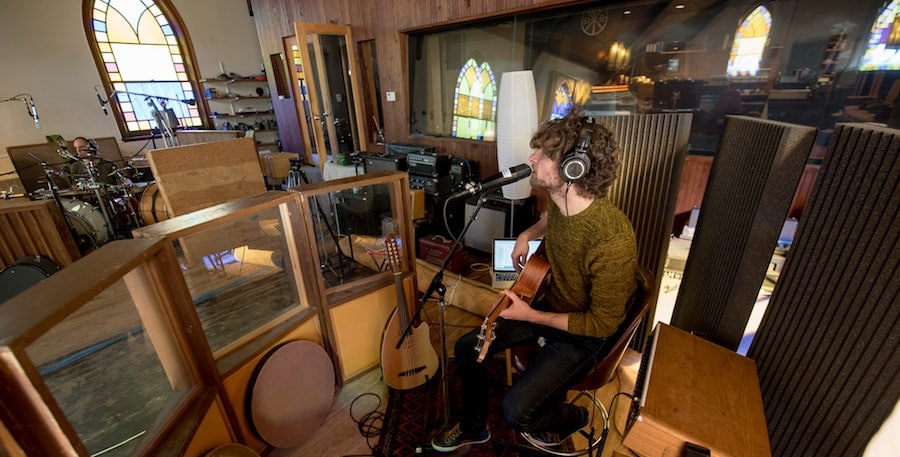
Michael tracking at Dreamland
As you're going through these different phases of project, are you working in Pro Tools from start to finish or are you also using other programs—what is the flow?
Michael: I do the demos in Logic. And then as soon as Nic steps in…
Nic: Pro Tools from there on out. From the first note that we start tracking it’s in Pro Tools.
Michael: And I don't ever pull material from the demos to use in the recordings. We record everything new 100 percent.
What kind of charts were you giving the orchestra?
Michael: Jules’ and my process is that we go to his house in Berlin, he opens up Sibelius, and he'll say, "French horn 1, bars 18 through 26," and I solo French horn 1 on the Logic demo, hit play and he transcribes it in real time. He's super fast at Sibelius and his ears are unbelievable. He's actually transcribing it rhythmically and melodically in real time. He puts the entire thing together and then we look at it in Sibelius and make the changes. Or he'll say, "You know, I really want to write something in this section that you left empty,” or, “this is too much in this section," or whatever. Jules is one of those guys who can just look at a score and hear everything in his head. Once Jules and I have agreed on the score, then it goes to the Metropole copyist, who prints out individual parts for everyone.
What recording rig were you using for the project?
Nic: We used the Pro Tools rig at Dreamland—I think we got up to 40 inputs up there. Tracking this stuff, a lot of it is done live, so a lot of inputs are needed at any given time. The Metropole Orkest had their own setup, which included an [Avid VENUE] S6L as well. Preamp-wise we used that predominantly—that was 60 microphones set up for the orchestra. We used a Decca Tree, about three pairs of room mics. Pretty much everybody had their own spot mic as well. So all of the rigs had to be fairly large. And then I mixed it mostly on my rig. We went all the way and did 96kHz, and each song is about 350 tracks.
Michael: It was by far the hardest mix I've ever been a part of.
Nic: Oh yeah, likewise.
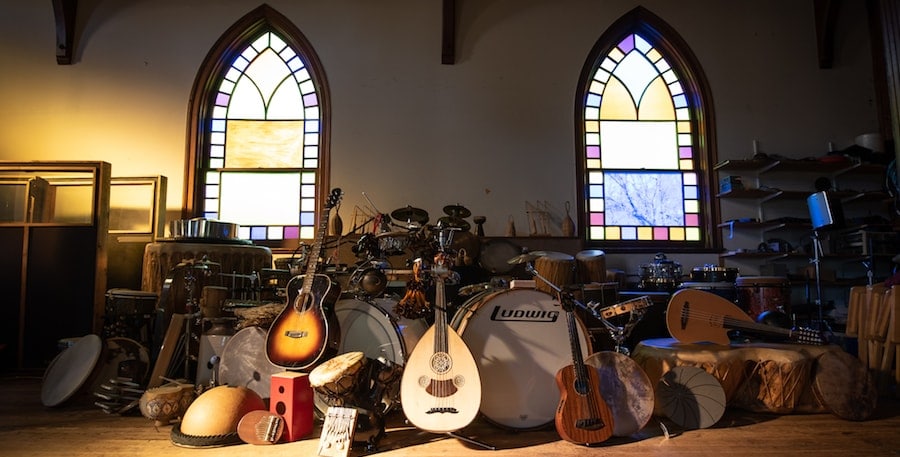
Michael, tell me a little bit about your relationship with Jules—I know that you have collaborated with him before. What do he and the orchestra bring to the project?
Michael: Jules and I became really good friends after another record called Sylva that Snarky Puppy and the Metropole Orkest did together with Jules conducting. We really see eye-to-eye on many different things, and he's a real outlier in the orchestral field, in that he has as deep, if not deeper, an understanding of modern music than of classical repertoire. Normally when modern music groups collaborate with orchestras, there's a canyon in between the band and the orchestra, because the orchestral players and the conductor generally don't live in the world of the music that they're about to make.
But with the Metropole, Jules is as aware of the nuances of modern music as anyone in my band, and the orchestral players individually are also in the same boat. They spend their lives playing pop, R&B, jazz, drum and bass, electronic music, etc. So you're instantly in a much better situation than you would be with a famous classical orchestra if you're making a record like the records that I've made with the MO. I mean, if I wrote music that was supposed to sound like Ravel or something, it would be a different scenario. But because of what Bokanté is creating, it's very advantageous. I feel that they're the only orchestra in the world that's capable of playing that kind of music at that level. And because I have experience working with them, from the second that I start writing for them, I know their strengths and I know what they can knock out of the park. I try to write that in to give them the opportunity to flex those muscles musically.
I mean, they swing, which is something that's almost impossible to find in the orchestral world. And not only are they capable of it, but they're really enthusiastic about experimenting with feel. For example, there's a thing that I do for them that I would be terrified to hand to most orchestras, which is writing a soli, which is like a written solo, but with multiple people playing it together. Most of the time, certain phrases actually have specific feel, like, “These four notes need to be straight, these three need to be swung very heavily, blah, blah,” and they love it! They love doing it the way that it's intended rather than kind of just blowing it off as unnecessary work. They have an incredible attitude—they really have the desire to be on the forefront of orchestral modern music.
To characterize Jules as only participating in the arranging process would be a really grave inaccuracy, because he is such a magician at coaxing the performances out of the orchestra when we're recording. He has complete, 100 percent awareness of everything that's going on—what notes are dragging too much, what notes are rushing too much, the balance between the sections, stylistically how it should sit in a certain kind of song. He is really producing in a way. He’s a freak. I can't imagine doing a record like this with anyone but him.
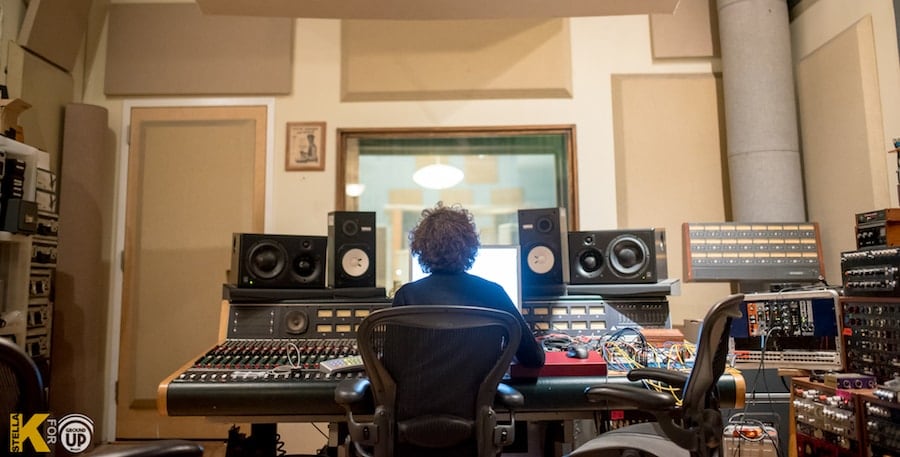
Michael at his Atlantic Sound Studios
You’ve both said that this is the most challenging mix that you have ever done—what were some of the challenges that you were dealing with?
Nic: The number of tracks is probably the first and foremost challenge. Even scrolling and trying to get from one place to another. I actually spent four days setting up all the layouts on the S3 [control surface] so that we could quickly find different sections of the orchestra or different percussionists.
Michael: The S3 was very helpful in this case—just being able to hit the “brass” button and go straight to those tracks saved so much time.
Nic: Sonically, a lot of the arrangements on the percussion were fairly intense. It wasn't a huge amount of space, so just getting different things groove-wise to sit in a good place with the bass, which was a real strange sound. Figuring out how those work together was challenging, because of the bass instrument and the complexity of the rhythms that the percussionists were playing.
Michael: The low end in general was the most high-maintenance element of the mix. Determining how the low end should feel, specifically… there's a lot of low end information from the different percussion, bass, oud, baritone guitar, and from the orchestra. We went through the mix process basically three times from beginning to end.
Nic: I know for me, certainly that last time, I think generally some people were happy with it. I just sort of listened to it and was like, “Man, I think it should sound better than this.” I don't know that there was a specific thing. It was just, “It should sound better.”
Michael: Yeah, I mean, it's a groove record, you know? You have to put the tracks on and it has to hit you in a way that makes you want to move. But that's not all it is. There's also a symphony orchestra playing, and you need to be able to hear all of them. You need to be able to hear all the sections balanced within that orchestra. And then you have a singer. So it's like these three elements: make it groove, make the orchestra feel natural and balanced so that you can hear the way the arrangements were intended to sound, and then make sure that the vocalist and all of these thick backing vocal parts all cut. It was a challenge, but I think in the end we were really glad that we went through the whole painful process of mixing and remixing and remixing, because in the end, we got what we wanted. And actually, the master is the sixth revision.
Nic: Seventh!
Michael: Generally, I am not a person that sends masters back. Normally I take the first master, at most the second master. This one was such a beast. I thought, “Am I going crazy? Am I going nuts that I still don't like this?” Our engineer, Dave McNair in North Carolina, an amazing guy who has worked on a lot of records with us, was so patient. Everyone was, Nic especially. Everyone wanted it to be right, and that's the beautiful thing.
Nic: In all of the parts of the process, the tiniest little change to one thing, even in mastering, one little bump here or there changes a lot. But it was worth taking the time.
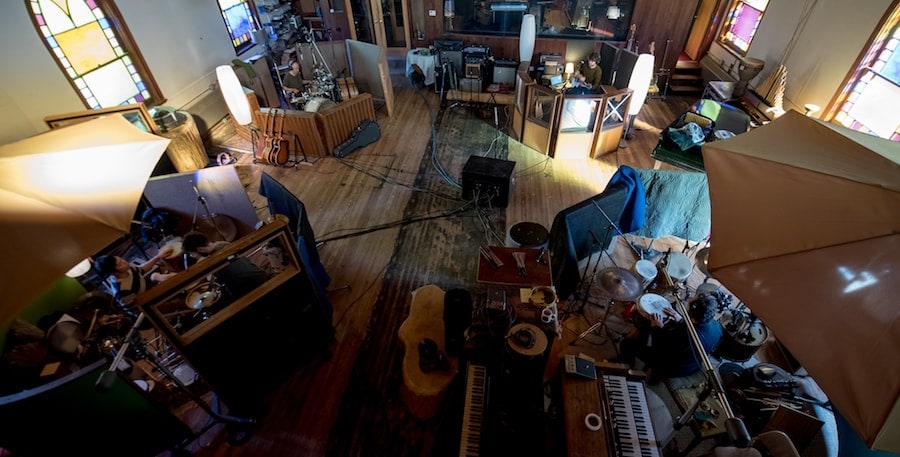
Nic, what is your toolkit when you’re mixing—do you have a certain set of outboard or plugins that you generally use?
Nic: Mix-wise, it's almost entirely in the box. I had one outboard compressor, which I think in the end I might have ditched. Generally, I'll track with compression and EQ and sort of get started even before we get to that point. With most projects, I try to not use my stock favorites. We'll try different things first and just see sort of what fits the music the best. I've got tons and tons of plugins, but tend to use a lot of the UAD and FabFilter stuff. But really, I use everything. Outboard-wise, we did use a real plate and a Marshall Tape Eliminator.
To what degree to you use control surfaces versus mixing with keyboard and mouse?
Nic: Prior to having the S3, I had the Artist Mix. I much prefer having physical faders and physical knobs to use more than using a mouse. I find it gives more, maybe for lack of a better word, happy accidents. It can be more of an organic process rather than sort of highlighting and dragging, clicking and all of that stuff. And with this, there was a lot of writing.
How did the new Bokanté album end up on Peter Gabriel’s Real World label?
Michael: I think our manager, Mike Chadwick, contacted them and just kind of just said, “Hey, this is Michael’s new band, give it a listen.” I think it was really as simple as that, and they checked it out and decided to release and distribute the album after the record was done. Peter listened to it and approved it after everything had been completed.
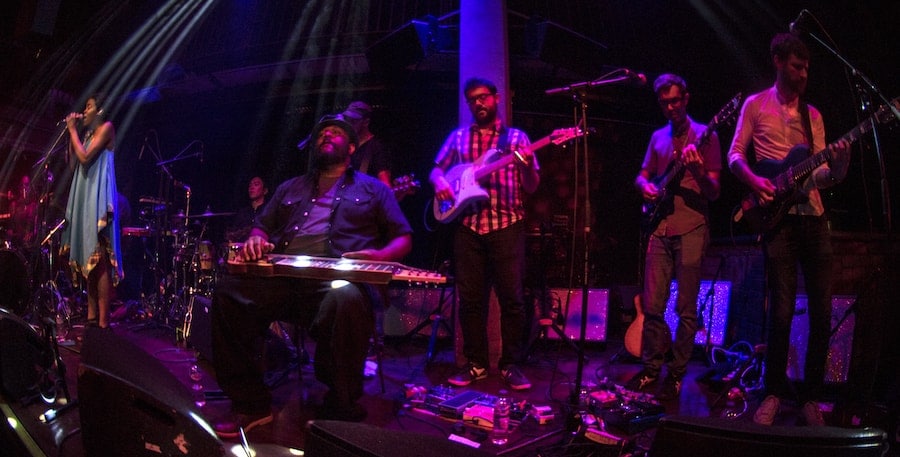
Bokanté performing at London’s Jazz Café
Now that Bokanté's on tour, how is the new material being translated to the stage?
Michael: Strangely, it's working really well. You would think that once you remove 52 human beings from the music that it would feel empty, but actually, unlike Snarky Puppy's Sylva record, this music can be performed without the orchestra and it functions just fine. In many cases, the guitar players have learned the orchestral lines and they play them on the gig. We just started this last tour, playing these songs without the orchestra, and it's great.
It’s kind of the same philosophy as Snarky Puppy, which is that it's highly structured and everyone's allowed to ignore the structure whenever they want. You know what I mean? Everyone has highly specific parts that all work together, and it's up to the musician's discretion how much they want to embellish those parts or stray from them or play them exactly as written or whatever. I defer to the taste of the musicians, and they all have incredible taste, so no one's going to just arbitrarily play something different. If they leave their part, they're doing it because there's another option that's more musical in that moment based on what's happening on the bandstand. So that's a really cool thing. That way the music's different every night. We're not playing the exact same thing each show, but the things that we're playing are never arbitrary.
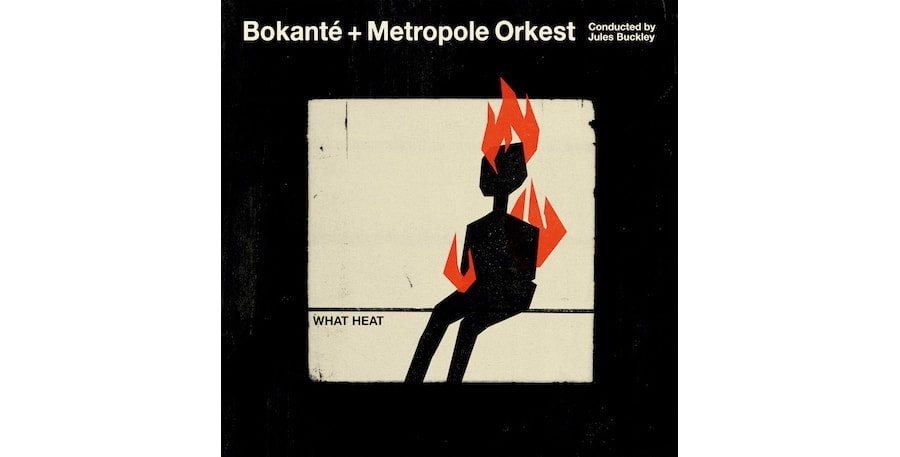
The new album’s title is What Heat. What's the significance of that to the music?
Michael: One of the tunes that Malika and I wrote, the last song on the record, which is called Maison En Feu, is – which means, “house on fire.” It was an image that I had in my mind. This band is very political, or at least, very sociopolitical. It consists of people from four different continents, from five or six different countries, a significant number of whom live in the U.S. as minorities or immigrants and feel the effects of our current political climate maybe a little harder than the white males in the band.
And so I pitched this idea to Malika, an image for one of the songs of a man sitting in his living room while the house burns—just kind of calmly sitting there, which for me kind of feels like what our society has been doing over the last five to ten years as we've watched a lot of disturbing things enter the picture and not really get tempered… this feeling like the house is going up in flames and everyone's just sitting around. That image kind of summed up what the record was trying to say. So the phrase "What Heat" is a bit ambiguous, because it could be a question, like the person doesn't even notice that the house is going up in fire, or it could be a comment, an observation of the rising temperature. I feel like the imagery of the album cover and the imagery of the title has this sense of urgency in a way, but it also has this sense of apathy, which I think is a pretty accurate description of how we’ve been dealing with it as a society.